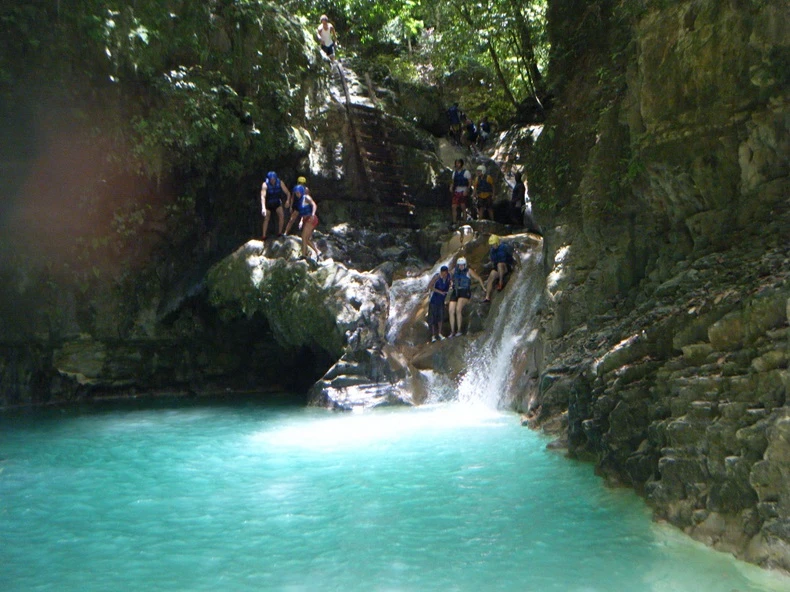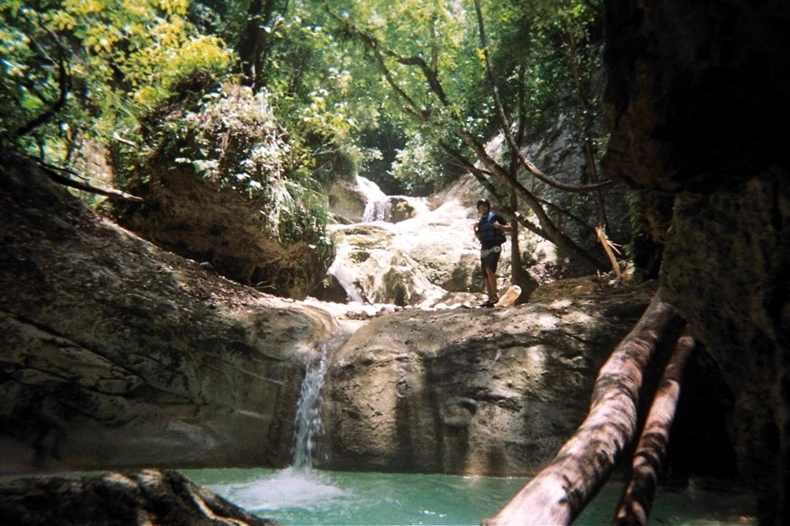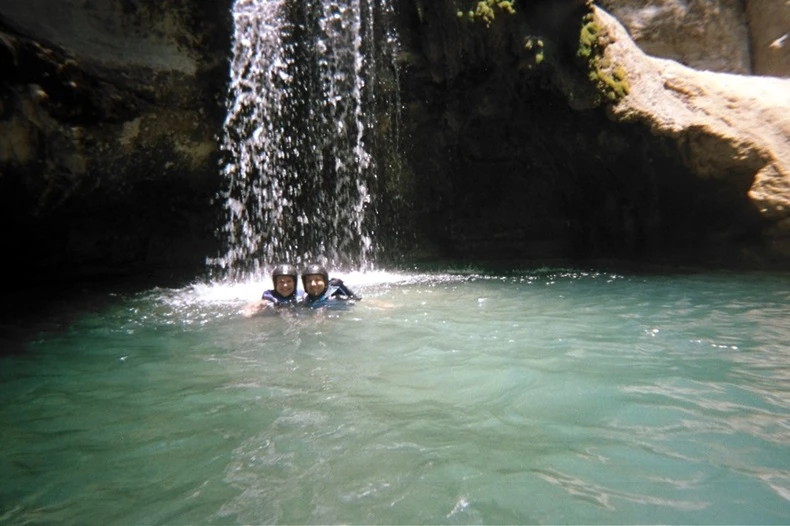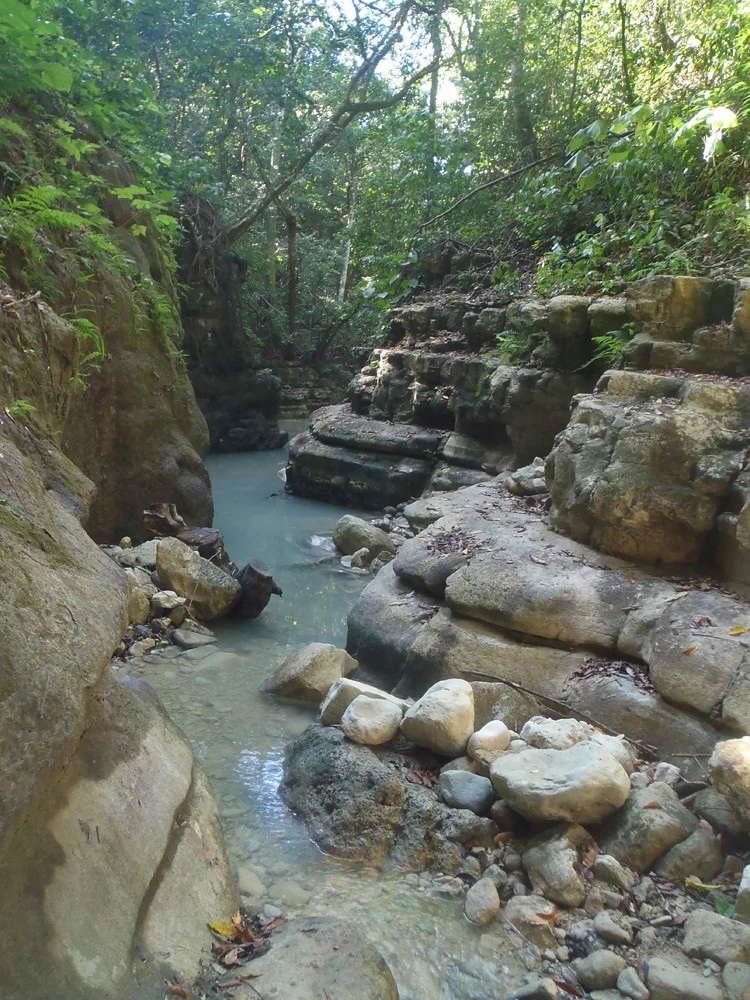The Dominican Republic’s 27 waterfalls, commonly known as the Damajagua waterfalls, are a fantastic location to prepare your hiking boots. Come along as we discover more about this stunning location.
When you think about the Dominican Republic, you might see gorgeous Punta Cana, the Isle of Lights festival in Santo Domingo, or the world-renowned salsa musician Juan Luis Guerra. However, today we’re going to visit a stunning location that not many people have had a chance to see, The Damajagua waterfalls.
Also known as 27 Charcos to the locals, are home to 27 waterfalls that are among the most popular tourist destinations in Puerto Plata. These natural wonders have formed over time, creating stunning waterfalls that cause rocks to slide naturally.
Although most visitors only visit 12 of the 27 waterfalls because it would take too long and require a lot of physical exertion to see them all in one day, the Damajagua River is situated in a natural area that is protected by the Dominican Republic government.
Helpful Information Regarding Damajagua Waterfalls

Puerto Plata, which means “Silver Harbor,” is the province where the 27 waterfalls are concealed. 32 provinces make up Puerto Rico. Puerto Plata is the capital and one of the province’s nine municipalities.
Puerto Plata is approximately 6 miles (10 km) far from Los 27 charcos. If you like to go alone, you can travel the Santiago highway.
Ten minutes from Puerto Plata, in the Imbert municipality’s Los Llanos de Pérez region, is where you can discover a little entry leading to Los 27 charcos. A 27-charcoal excursion departing from Puerto Plata is another convenient method to get in touch with them.
If you’re in the mood for an exciting road trip, you may fly into Santo Domingo, the capital of the Dominican Republic, and drive the country from south to north. It should take you around three hours and twenty minutes to cover the 129 miles (208 km) that divide the two towns.
When Should You Visit Puerto Plata?
You may visit Puerto Plata and los 27 charcos at different seasons, according to your preferences. Because Puerto Plata is located in the idyllic Dominican Republic, its temps are always between 63°F and 90°F.
If you decide to visit Damajagua Waterfalls between December and April, be aware that accommodations will be hard to come by. However, in February and March, you may be able to see the fantastic Puerto Plata Carnival.
If you’re on a tight budget, May through mid-June is a terrific time to go because accommodations will be significantly less expensive than from December to April. However, be prepared for the heat—temperatures will rise to about 90°F.
Between mid-June and November, when it rains the most in the Dominican Republic and is also hurricane season, plan on getting wet if you decide to visit Damajagua Waterfalls. However, there won’t be many tourists there.
The Price for the Tour
The cost of the tour of seven waterfalls is approximately 6.20 USD (350 Dominican pesos); the tour of twelve waterfalls is 7.96 USD (450 Dominican pesos plus 100 additional pesos); and the full experience of all 27 Damajagua Waterfalls is 8.85 USD (550 Dominican pesos).
Meals are not included in this trip; an additional 6.20 USD (350 Dominican pesos) will be charged. There is a buffet with rice, peas, and a choice of fish or chicken.
You may rent a locker at the park if you are carrying a backpack. Depending on how much you are carrying and how much room you need to rent, you may rent a type I locker for $2 or 100 Dominican pesos, a type II locker for $3 or 150, a type III locker for $4 or 200, or a type IV locker for $8 or 400.
For USD 120, or USD 150 if you want to do it with another person, you can take a private tour in a buggy before you get to the park, stopping at a place to meet locals who live in the surrounding communities, listening to Dominicans play merengue live for you, experiencing the adventure in the park, and having lunch.
The Origin of Damajagua Waterfalls

The Damajagua River in the Dominican Republic is home to Damajagua Waterfalls, a series of naturally occurring waterfalls and pools formed through erosion.
This river winds through a forest for around 4.5 miles (7 km), with labyrinths, tunnels, ponds, and waterfalls, of course. This is the result of springs in the towns of Altamira and Imbert that are located on mountains.
The term “damajagua,” which originates from the Taíno language, an indigenous language unique to the Dominican Republic, derives from the majaguas (blue mahoes) that grow next to the river. The blue mahoes are particularly visible from the 12th pond on.
Waterfalls are formed as a result of the Damajagua River’s formation on top of mountains. The eighth pool of Damajagua Waterfalls in the Dominican Republic is the tallest, standing at a height of 23 feet (7 metres).
In 1994, the first visitor to Damajagua Waterfalls came. A decade later, the Dominicans declared this enchanted location a national park and began promoting tourism there. They give 0.50 USD (30 Dominican pesos) of their earnings to the community development around Damajagua Waterfalls.
Hike in Damajagua Waterfalls
Your experience will start as you ascend a mountain on your route to Damajagua Waterfalls. You will witness Dominican flora throughout the walk, which takes 30 to 40 minutes, as you go through the lovely surrounding forest.
There are shops before the walk where you may purchase locally created handicrafts as mementoes to bring back home.
Within the forest, you will come across both endemic and imported trees, each appropriately labelled with both its scientific and colloquial names in Spanish. Within the park’s boundaries, there’s a chance you could spot La Cigua Palmera, also known as the palmchat.
How To Get There?

You may drive there, use one of the many tour operators listed on our website, or arrange a guided trip with transport from the Puerto Plata Concierge.
If you go alone, it will take you around one hour to get to Damajagua Waterfalls Park from Puerto Plata because it is situated in the neighboring town of Imbert. The villa concierge may organize a trip for you if you are staying in a private villa. They will make the necessary calls to a local tour operator.
When driving to the park, follow the Puerto Plata-Navarrete route (Hwy 5) towards Santiago. After traveling on the highway for around twenty minutes, you will pass through Imbert and come to a Texaco station on the left. When you head out of town, stay on the main highway and you’ll cross one bridge before going up a hill.
You will cross another bridge and pass an Ingenio Amistad sign on your left as you descend the slope. After there, the road will bear left, opening up a sizable sugar cane field to your left.
There’s a big Brugal billboard up ahead. The AGRD kiosk is located on your right, directly across from the dirt road entry to the waterfalls, just before the billboard.
The locations are also available on Google Maps. For a modest cost, local Guaguas may also transport you there. If you inform the bus operator that you are traveling to 27 Charcos Park, the Caribe Tour bus can drop you off in Imbert if you are traveling from Santo Domingo. Likewise if traveling from Santiago.
The Charco de los Militares and La Rejoya Waterfall Trekking ecotours in Puerto Plata are comparable and take place in two of the most stunning settings in the North Dominican Republic. Be mindful of your surroundings and don’t leave any garbage at all at any of these sites.
How Long Is The Tour of Damajagua Waterfalls?

The first part of the 27 Falls Tour in Damajagua takes around half an hour, going along a dirt route through the forest, passing footbridges, and taking in the variety of plants and wildlife.
Once you get to a rocky mountaintop, you may go down the first waterfall (or leap) and make your way one by one to the turquoise pools.
The majority of tourists will only see the first seven falls since the remaining 27 “Charcos,” as they are called locally, require more time and effort.
The shortest trip lasts around 2.5 hours, and prices vary depending on the tour operator you select. It is best to arrange through a tour operator because they will handle all logistics, including transportation and meals.
The entire tour, from departure to arrival at your hotel or private villa rental in Sosua, should take no more than four or five hours. The trip is best taken in the morning when there are less people and the water is cooler, or in the afternoon when there are more people and the water is warmer.
Between Thursday and Sunday, expect crowds since most visitors arrive about midday. Park hours are 8 a.m. to 3 p.m.
Learn Spanish before Visiting the Dominican Republic
Are there not enough 27 charcos? The Dominican Republic offers hiking and zip lines, but before you go to this idyllic Caribbean island, make sure you brush up on your Spanish.
Enroll in a free Spanish course today to discover the many advantages of learning the language. Not only can Spanish introduce you to 21 different countries and a whole new continent, but it can also help you communicate with the more than 53 million Spanish-speaking Americans in the United States.
For more than ten years, Homeschool Spanish Academy has been instructing more than twenty-four thousand enrolled students in English each month.
That’s because, in addition to having kind native teachers who will help you become proficient in Spanish and prepare for a vacation to Los 27 charcos, also provide earned high school credit, flexible scheduling, and many payment choices.
Safety First
- Wearing a helmet and life jacket is REQUIRED. Without it, you won’t be allowed to take the trip. Every guide is wearing a helmet and a life jacket.
- Pay attention to the tour guide. Avoid trying to cross a bridge or use a ladder to go over a waterfall by finding a different path instead of trying to tackle it alone.
The quantity of rain that has fallen in the region and the season both affect the water levels. It may appear as though there were three feet of water below the surface, even though it looks deep enough to leap into. - On some of the waterfalls, the guides will give you the option to leap, slide, or stroll down. Make the decision based on your comfort level, and don’t feel guilty if it means choosing the simpler route. Nobody is as familiar with your comfort zone and capabilities as you are.
What To Wear
- Water-friendly apparel. swimming suit or shorts and a T-shirt
- Women have to wear some sort of shorts. You’ll want to shield your upper thighs from any jagged rocks as your bathing suit will ride up.
- Old tennis shoes or water shoes. You are walking over rocks while trekking. This is not something you can accomplish barefoot. You can rent shoes at the park, but they’re not very good. For affordable, comfortable water shoes that can last the journey and return, we adore these Cuda’s sneakers.
- Bug repellent and sunscreen. Although the insect repellent will most likely disappear in the water, you will still need it for the ascent. It’s best to use a DEET insect spray in addition to a sport sunscreen. Both adults and children can benefit greatly from Blue Lizard Australian Sunscreen if they have sensitive skin.
Conclusion
Damajagua Waterfalls is the best in Puerto Plata, Dominican Republic. This journey takes you through a tropical jungle with 27 waterfalls, each of which you must leap from (lifesavers and helmets required).
Those who would rather not leap can use the wooden steps instead, as some of the jumps are as high as 25 feet. It’s a physically demanding exercise, but the park provides the equipment and personnel to make it simpler.
